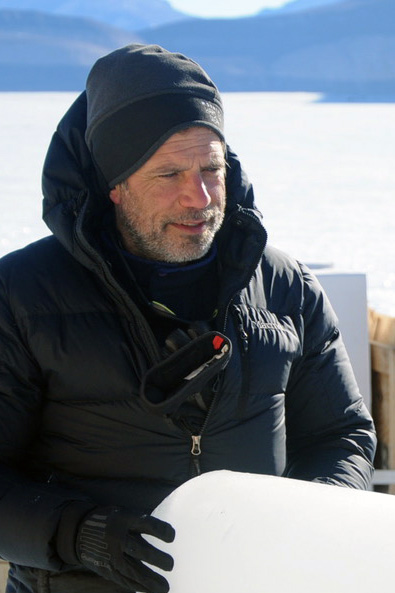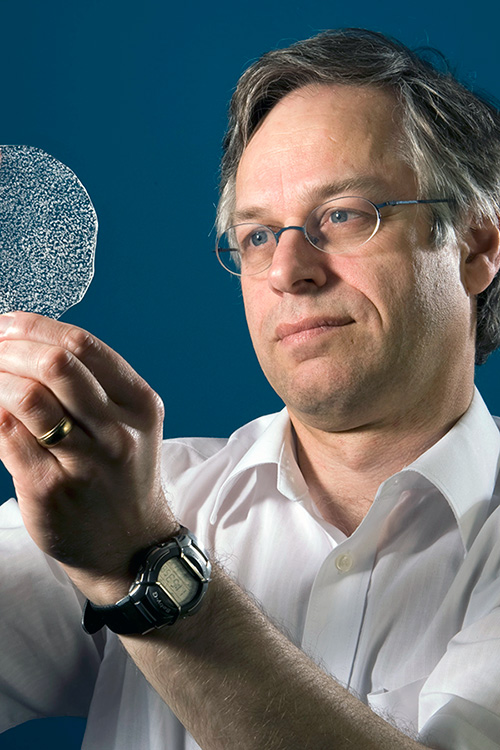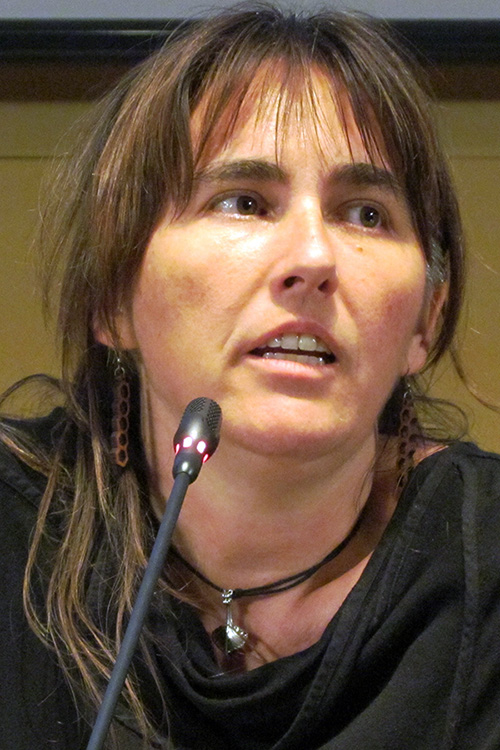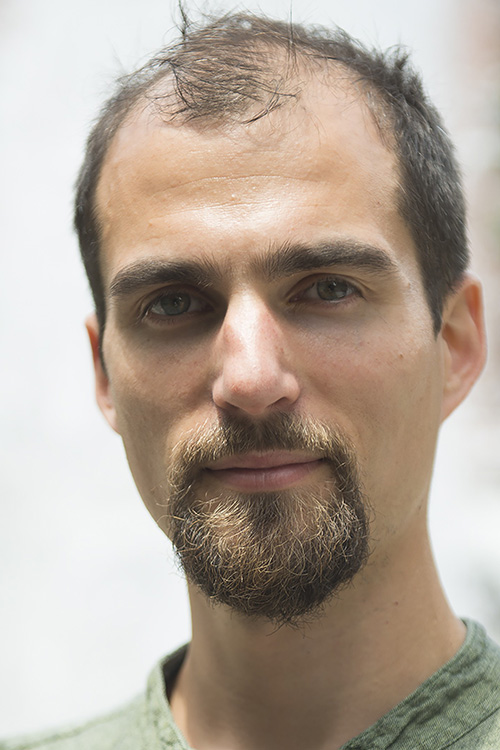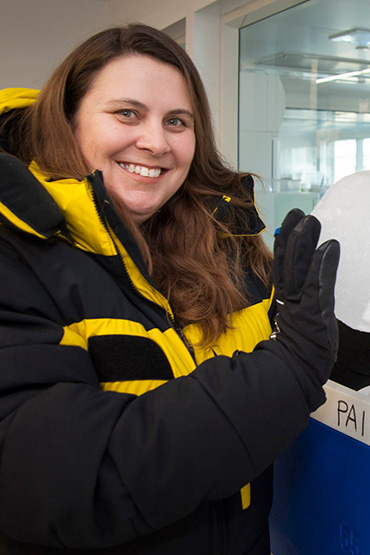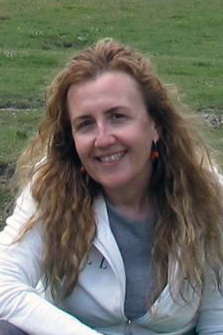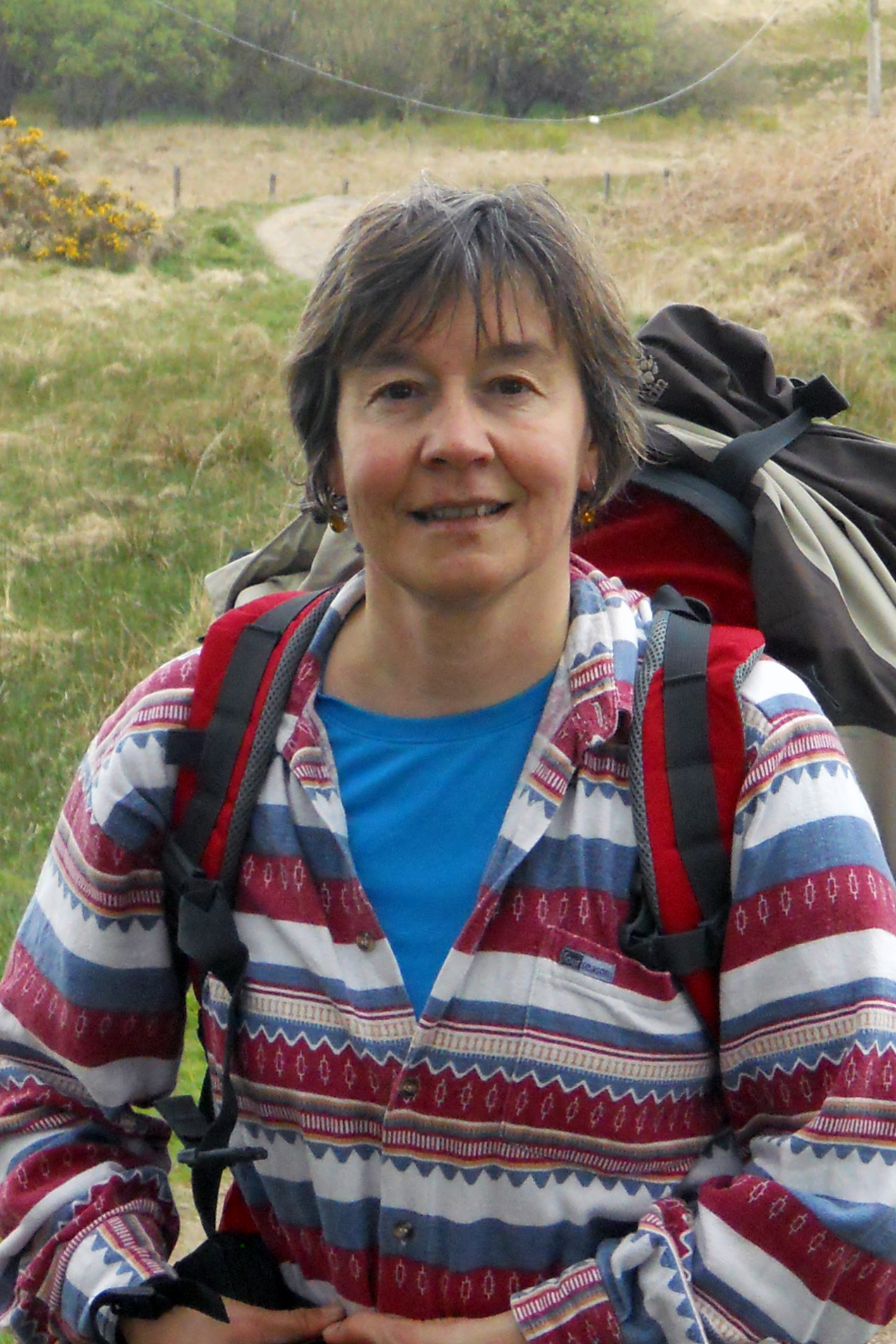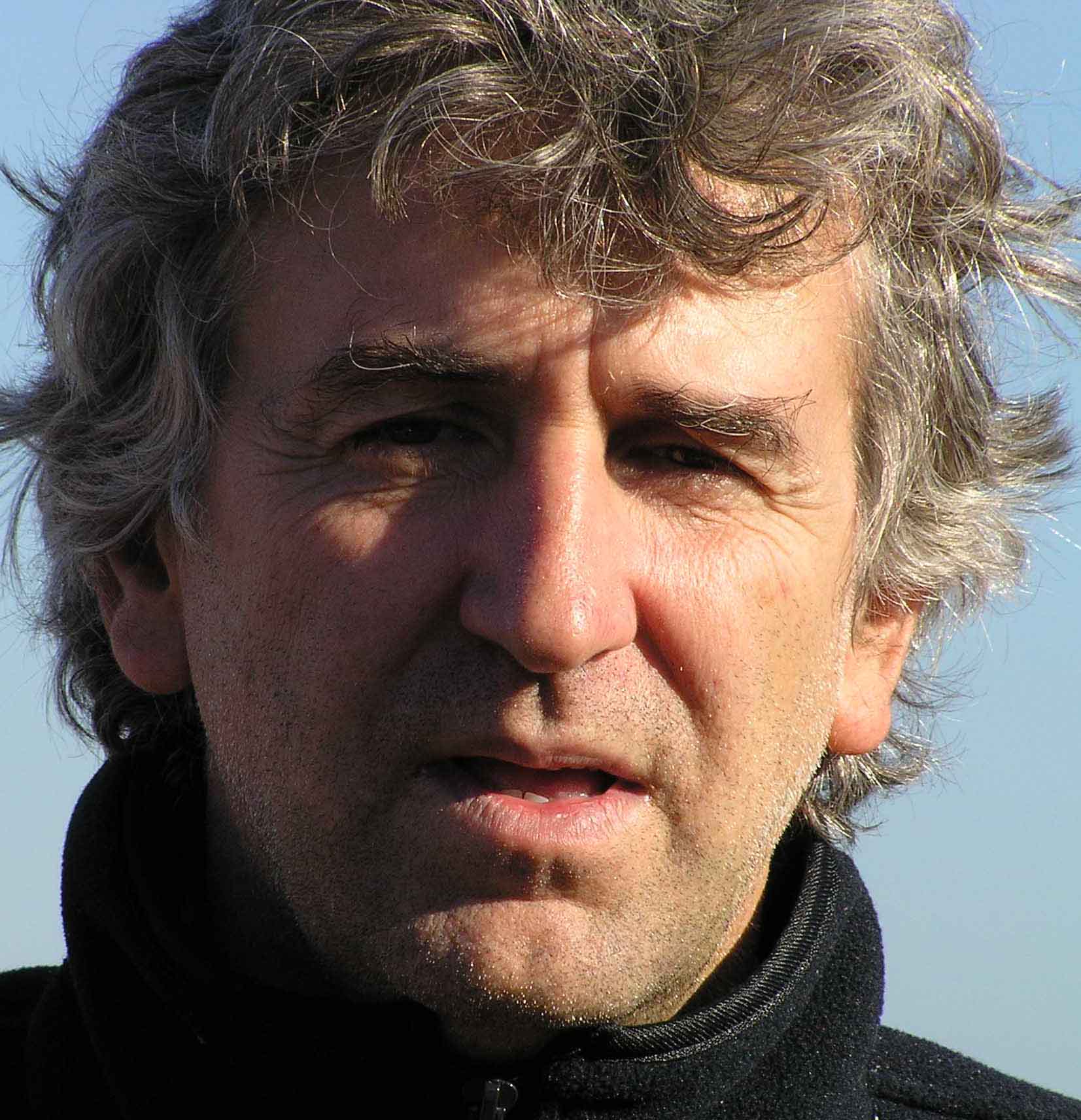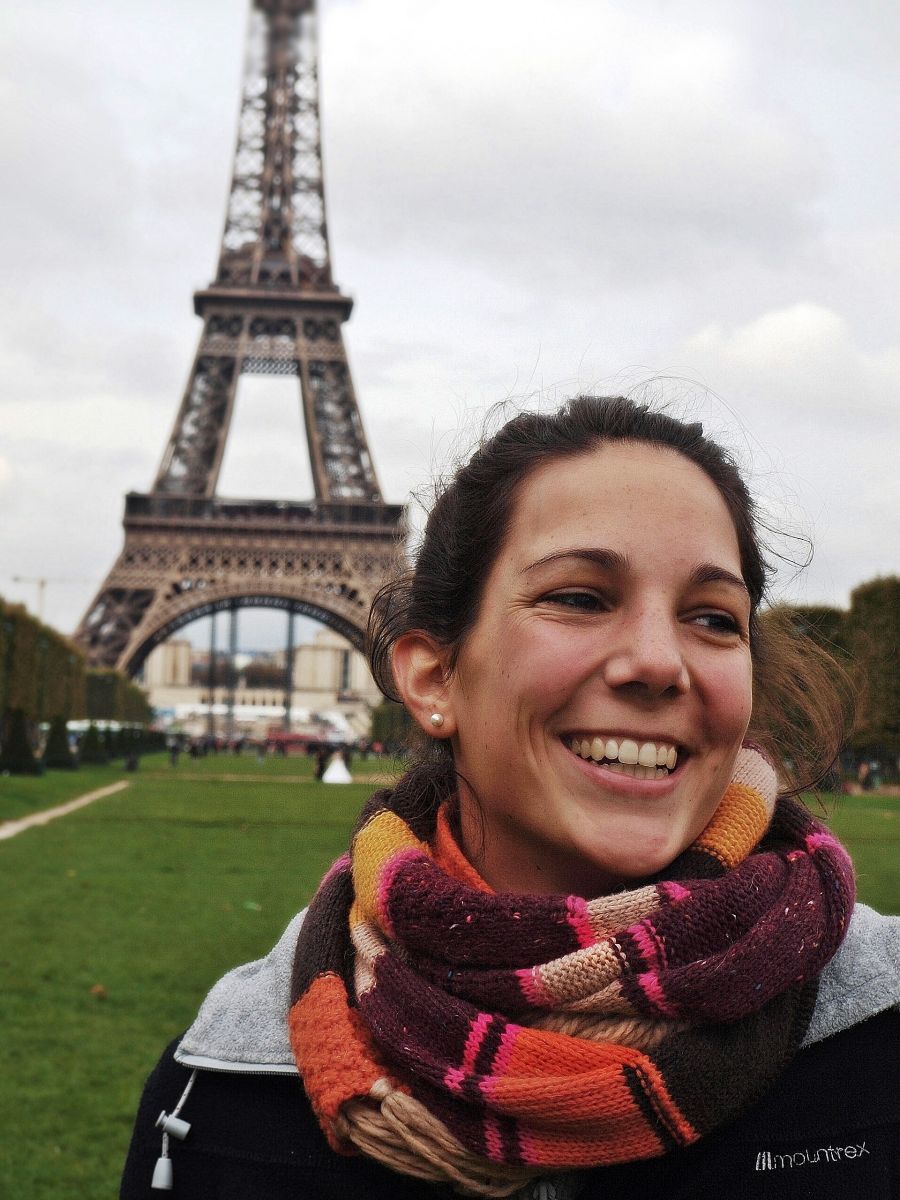|
|
New observations of past, fast changes in greenhouse gases 1College of Earth, Ocean, and Atmospheric Sciences, Oregon State University, Corvallis, OR, USA Advances in measurement technology and new archives now allow the resolution of ice core gas records to approach or exceed the atmospheric lifetimes of methane, carbon dioxide, and nitrous oxide. Detail at this level provides insight in to mechanisms that control natural variability and feedbacks in the climate system on time scales relevant to human impacts on the earth system. This presentation provides an overview of new carbon dioxide and methane results, primarily from the WAIS Divide ice core in Antarctica, that reveal new aspects of the relationship between abrupt climate change and greenhouse gas biogeochemistry. Continuous records of atmospheric methane from WAIS Divide fully document the well-known variations tied to the Greenlandic stadial-interstadial variability, linked by multiple lines of evidence to changes in low latitude methane emissions. This and other records also reveal a) abrupt shifts in the baseline methane concentration during some Heinrich stadials, probably tied to the impact of Heinrich events on tropical hydrology, and b) persistent but enigmatic centennial variability in the Holocene and last glacial period. Carbon dioxide variations during the last ice age and deglaciation generally correlate with Antarctic temperature, but in detail seem comprised of variability on different time scales. Coincident, abrupt increases in methane and carbon dioxide during some Heinrich stadials delineate a new type of abrupt event, probably related to southward migration of tropical rainfall belts causing increased methane emissions. The synchronous carbon dioxide variations could also have a terrestrial source, for example due to drying in the northern tropics, but there are viable mechanisms linked to changes in ocean circulation or biogeochemistry. |
|
About the speaker: Ed Brook is a Professor in the College of Earth, Ocean, and Atmospheric Sciences at Oregon State University. His primary work uses polar ice cores as recorders of past climate change, focusing on the relationship between greenhouse gases and climate on time scales of decades to hundreds of thousands of years, but he occasionally delves in to other areas of geochemistry. He received a BS in Geology from Duke University, MS from University of Montana, and PhD from the Massachusetts Institute of Technology and Woods Hole Oceanographic Institution. He was subsequently a NOAA Climate and Global Change Post Doctoral Fellow, working with Michael Bender at the University of Rhode Island. Ed is a recipient of the Aldo Leopold Leadership Fellowship, and a fellow of both the American Geophysical Union and the American Association for the Advancement of Science. He is also active in service to the scientific community, including co-chairing IPICS, participating in numerous advisory groups in the US polar science community, and serving on the PAGES Scientific Steering Committee. |
|
|
|
Warm worlds – features and lessons from the Quaternary interglacials Worlds that are warmer than today have a particular relevance for the future. The Pliocene had higher CO2 concentrations, comparable to those of today, but data to infer the climatic effects are rather sparse. The Holocene has a wealth of data but rather muted climate changes in many places. Some Quaternary interglacials offer a reasonable amount of data on both forcings and response, and significant differences in climate. However, interpretation is complex because the forcings and responses have a regional character that makes them only partially analogous to anything expected in the future. Interglacials are warm, low land-ice extent (high sea–level), end members of glacial cycles. Concentrating mainly on last 800,000 years, we first explore different definitions of interglacials to understand what the population of the species “interglacial” is. We use a quasi-sea level definition to identify 11 interglacials in the last 800 ka. Considering both astronomical forcing and glacial maximum ice volume, we can tentatively identify why this may be the case. Having identified the group members, we study their diversity. Marine, ice and terrestrial data compilations suggest that, despite spatial heterogeneity, Marine Isotope Stages (MIS) 5e (last interglacial) and 11c (~400 ka ago) were globally strong (warm), while MIS 13a (~500 ka ago) was cool at many locations. The onset of an interglacial (glacial termination) seems to require a reducing precession parameter (increasing northern hemisphere summer insolation), but this condition alone is insufficient. Terminations involve rapid, non-linear, reactions of ice volume, CO2 and temperature to external astronomical forcing. The precise timing of events may be modulated by millennial-scale climate change that can lead to a contrasting timing of maximum interglacial intensity in each hemisphere. This will be illustrated particularly for the case of MIS5e, and I will emphasise the implications of this interglacial for ice sheet stability. |
|
About the speaker: Eric Wolff is a Royal Society Research Professor in the Department of Earth Sciences at Cambridge University. He previously worked at the British Antarctic Survey. After graduating as a chemist, he has studied ice cores from the Antarctic and Greenland for the past 30 years, using them to understand changing climate, as well as changing levels of pollution in remote areas. He also carries out research into the chemistry of the lower parts of the Antarctic atmosphere. He chaired the science committee of the European Project for Ice Coring in Antarctica (EPICA), and co-chairs the international initiative (IPICS) to coordinate future ice core research. His main research goal is to understand the causes of climate evolution over recent glacial cycles. He coordinated the recent interglacials review paper that came out of the PAGES Past Interglacials Working Group. |
|
|
|
Exploring atmosphere-ocean connections in the Western Mediterranean region during past climatic transitions: last terminations, glacial inceptions and some Holocene key changes 1GRC Geociències marines, Dept. Dinàmica de la Terra i l'Oceà, Universitat de Barcelona The Mediterranean region is an exceptional sensor of climatic variability and in particular, the western Mediterranean Sea has demonstrated a tight connection with changes in the Atlantic Meridional Overturning Circulation (AMOC). Such a connection is further explored through an integrated study of cave speleothems and marine sediments reflecting climate conditions along the Iberian Peninsula. New speleothem records covering a transect from the most Atlantic to the most Mediterranean sectors across the Iberian Peninsula provide solid chronologies from Marine Isotopic Stage (MIS) 7 to 4 covering Terminations III and II and subsequent glacial inceptions. A clear picture stands out with a strong coupling between intense aridity phases and cold stadial conditions linked to AMOC weakening events and also to changes in the Mediterranean thermohaline circulation. In contrast, a high resolution Younger Dryas speleothem record breaks with this overall stadial pattern showing an intra-event transition from extreme arid toward wetter conditions which is linked to circulation changes in the Atlantic Ocean. Temperature and humidity changes along the Holocene show a more complex pattern. A new high resolution W-Mediterranean surface temperature record supports maximum temperatures during the early Holocene while records from the north to the south of Iberia indicate limited water availability. Maximum in water availability occurred between 9-7 ka BP followed by an overall reduction in humidity, whose timing and pattern changes very much among the records, likely reflecting different proxy sensitivity, seasonality or regional diachrony. Finally, both speleothem and marine records show significant variability in temperature and humidity pattern along the last 2 kyr, particularly the Little Ice Age appears as a very unstable climatic period where two different phases can be differentiated in terms of temperature and rain patterns, the main driver of the short term variability of this period seems to be associated to the Atlantic Multi-decadal Oscillation. |
|
About the speaker: Isabel Cacho is Associated Professor at the University of Barcelona since 2008. She graduated in Geology in 1992 and earned her PhD in 2000 at the UB. She was affiliated to the University of Cambridge as a post-doctoral researcher from 2000 to 2003 in the Godwin Laboratory. She is a specialist in the application of different geochemical tools for reconstructing past environment conditions mostly based on the analysis of deep marine sediments and also on cave speleothems. She has a strong background in the Mediterranean paleo-climatology. She is also intensively working in the Eastern Equatorial Pacific, reconstructing ocean-atmosphere coupled changes with a particular attention to the carbon cycle. Her current research is very much focussed on Mediterranean thermohaline circulation changes in relation to past climate variability in the context of a recently granted ERC-Consolidator grant. |
|
|
|
The future of old things: geoinformatics for better paleoscience 1Dept of Earth Sciences, University of Southern California, Los Angeles, CA, USA By some accounts, paleoscientists spend up to 80% of their time trying to access the data they need, in the form they need it. In the 21st century, we should be able to do much better. This lecture will review recent progress made by the LinkedEarth project, which relies on data standards and artificial intelligence to enable scientists to spend more time doing the science they want to do. LinkedEarth is manifesting a better future for paleoscience by creating an online platform that (1) enables the curation of a publicly-accessible database by paleoclimate experts themselves, and (2) fosters the development of community standards. In turn, these developments enable cutting-edge data-analytic tools to be built and applied to a wider array of datasets than ever possible before, supporting more rigorous assessments of the magnitude and rates of pre-industrial climate change. We will start by illustrating these principles in the context of the PAGES 2k project, and outline how they may serve the PAGES community as a whole. In particular, we will illustrate how to go from spreadsheets to syntheses (PAGES 2k). We will dwell on community participation in the first paleoclimate data standard. We will present GeoChronR and Pyleoclim, new open-source tools compatible with these standards and enabling cutting-edge paleoscience. We will finish by some remarks on interoperability, enabling cross-talk between scientists within a field, across fields, and between data and models. In our vision of the future, machines serve scientists, not the other way around. Yet, the process needs a lot of human input, and the participation of the PAGES community will be recognized and further encouraged. |
|
About the speaker: Julien Emile-Geay is a mathematical paleoclimatologist working as an associate professor at the University of Southern California. Using deterministic and probabilistic models, he creates mathematical representations of the climate system to shed light on its dynamics. He is particularly interested in the role of the tropics in long-term climate change, and in constraining the magnitude of internal climate variations on a variety of timescales. As part of PAGES, Julien is active in the PAGES 2k group, in two main ways: The first is to develop innovative data stewardship approaches to extract greater information from existing paleoclimate records. The second is to use the rich array of paleoclimate records from the Common Era to uncover patterns of low-frequency climate variability in the spatial, temporal, and spectral domains, and use those to evaluate and improve climate models |
|
|
|
Early onset of industrial-era warming across the oceans and continents 1Research School of Earth Sciences, The Australian National University, Canberra, Australia The evolution of industrial-era warming provides critical context for future climate change, and has fundamental importance for determining climate sensitivity and the processes that control regional warming over land and in the oceans. We use post-1500CE palaeoclimate records to show that sustained industrial-era warming of the tropical oceans first developed during the mid-19th Century, and was near-synchronous with Northern Hemisphere continental warming. The early onset of sustained, significant warming in palaeoclimate records and model simulations suggests greenhouse forcing of industrial-era warming commenced as early as the mid-19th Century, and included an enhanced equatorial ocean response mechanism. The development of Southern Hemisphere warming is delayed in continent-scale reconstructions, developing around the end of the 19th Century over mid-latitude continents and not yet evident at the continent scale over Antarctica. This apparent delay is not reproduced in climate simulations, but further regional analysis of an expanded array of Antarctic palaeoclimate records supports the delayed development of warming here and may be related to Southern Ocean circulation processes. Our findings imply that instrumental records are too short to comprehensively assess anthropogenic climate change, and in some regions ~180 years of industrial-era warming has already caused surface temperatures to emerge above pre-industrial variability. |
|
About the speaker: Nerilie Abram is an Associate Professor and Future Fellow at the Australian National University. She is also a Chief Investigator for the new Australian Centre of Excellence for Climate Extremes. Her research focuses on reconstructing climate changes over the last millennium, using a variety of methods including Antarctic ice cores, tropical reef corals and speleothems. Nerilie has played leadership roles in a number of the PAGES 2k regional working groups, and is part of the coordinator team for phase 3 of the PAGES 2k project. |
|
|
|
Climate Variability, Vegetation Dynamics and Human-Environment Interactions in Continental Mediterranean Iberia During Last Glacial Cycle The inland areas of Mediterranean Iberia are vulnerable regions to Global Change impacts as they are characterized by extreme climate conditions in terms of temperature range, strong winds, low annual precipitation and high evapotranspiration index along altitudinal and latitudinal transects. Humans have faced abrupt environmental and climate changes in these territories through the last glacial cycle and those synergies illustrate one of the PAGES initiatives: the climate-humans-environment interactions through time. New records have changed our understanding of the palaeoenvironmental framework for inner Iberia during the last glacial cycle. The current complex biogeographical context of the Iberian Peninsula is a reflection of a complex palaeoenvironmental history, with unexpected trends and impacts in both vegetation landscape and hydrological processes, compared with coastal areas, Atlantic and more typical Mediterranean regions. Patterns of cultural and socioeconomic evolution also show distinctive characteristics. Not surprisingly, terrestrial vegetation in continental Iberia shows a resilient behaviour during millennial – scale evolution and short periods of abrupt climate change, despite, interestingly, nearby locations respond as expected to abrupt changes with similar evolution in terms of taxa composition to Mediterranean and/or Eurosiberian sites. Besides, vegetation dynamics usually followed local, or even regional, palaeohydrological conditions but not always global millennial-scale climate variability. Asynchrony in both timing of the local last glacial maximum and humidity onset at the beginning of the Holocene are two clear examples of this complex scenario. Additionally, hunter-gathered groups likely responded to abrupt events with migration episodes, but there are too a number of examples of diverse responses to hydrological crises during deglaciation and the Holocene. Timing and intensity of first anthropogenic impact is also very variable along the whole territory. All these "apparent inconsistencies" are probably the result of an incomplete record but also illustrate the great heterogeneity inherent to Mediterranean regions. Interpretations of past human interactions with the landscape become more difficult in regions with extreme events, resilient vegetation and variable landscape dynamics. But they also provide an opportunity to improve our knowledge about Earth’s past environment at local-regional scales, in order to obtain better and more detailed scenarios of human interactions with future climate and environment changes, as PAGES promotes and society demands. |
|
About the speaker: Penélope González Sampériz graduated from the University of Zaragoza with a Geography degree in 1994 and a PhD in History in 2001. Her multidisciplinary approach has been essential to her research. She is interested in paleoenvironmental reconstructions, vegetation dynamics and past climate changes, using palynology as the main method. Her work focuses mainly on the study of different types of Quaternary records (from the Late Pleistocene and Holocene) in the Iberian Peninsula, aiming for a realistic reconstruction of vegetation changes and their interaction with climatic and/or anthropogenic variations, always in a multiproxy context. One of the main topics of her research is the study of human-climate interactions in the past, taking into account the influence of abrupt climate changes in patterns of human occupation and migrations, including extinctions and cultural collapses. She is heavily involved in institutional activities and outreach events - she is the leader of the “Outreach Commission of IPE-CSIC” and part of the CMYC Commission (Women and Science in the CSIC), gives talks and workshops in primary and high schools and regularly collaborates with, and considers the implications of, citizens in projects. |
|
|
|
Determining the causes of climate change: from large scale temperatures to extreme events Attribution of climate change to causes and Attribution of changing risk of extreme events both require reliable information about climate variability and change. The grand challenge team on extreme events highlights the need to better observe, understand, attribute and simulate extreme events. A short introduction to the approach of the grand challenge is given, followed by a discussion of its relevance to palaeoclimate. Two examples are discussed: Many drought reconstructions are available and there is evidence for very significant drought events in the past. As an example, the historical dust bowl drought and associated heat waves are compared to events that occur in climate model simulations. As a mechanism, sprint moisture preconditioning appears important, while links to decadal variability connected to sea surface temperature appear unclear and model dependent for that region. When considering a possible role of external forcing in drought, it is important to consider the expected pattern of the response, which can be complex over land. Nevertheless, long streamflow data support broadly a wettening of dry regions, and drying of wet regions following volcanic eruptions. The second example focuses on extremely cold conditions also following volcanic eruptions. While overall, reconstructions tend to show a weaker response to volcanic eruptions than simulated, some of the most extreme cold conditions of Europe occurred in the 1810s. Simulations suggest that this period around the eruption of Mount Tambora was systematically colder than the preindustrial climate in general. Attribution analyses shows that the volcanic eruptions are a key driver of these cool conditions, with only a weak contribution estimated from solar forcing. However, other aspects of the cold conditions, for example, in Central Europe, appear atypical for volcanic eruptions. Attribution methods can address to what extent events such as these are random weather variability, or what fraction of the risk of cold conditions can be linked to the volcanic eruption. |
|
About the speaker: Gabriele Hegerl is Professor of Climate System Science at the University of Edinburgh. Her research focuses on understanding the causes of observed climate variability and change. This includes changes in precipitation, changes in climate extremes, and temperature over the long historical record and the last two millennia. Gabi is also interested in constraining climate system parameters from observed change, including climate sensitivity and precipitation sensitivity. Gabi has a MS and PhD in applied mathematics, and did her postdoctoral work at the Max-Planck Institute for Meteorology, and the University of Washington. Gabi has published more than 130 papers and has played key roles in three recent IPCC Assessments. She is PI on an ERC Advanced Grant ‘Transition Into the Anthropocene’, which constrains variability and forced response from the past 200 years of observations, is the recipient of the Hans Sigrist prize of the University of Bern, and a fellow of both the American Geophysical Union and the Royal Society of Edinburgh. She also serves as one of the leads on the WCRP grand challenge on weather and climate extremes. |
|
|
|
Human Evolution And Climate We look around and see all the animals well adapted to their respective ecological niches. They have had enough time to adapt. Natural selection, Darwin´s favorite mechanism for evolution, has done a good job with them. The unfitted were eliminated in the struggle for life, long time ago. Today natural selection should be only a normalizing force. Then, why do species evolve? Darwin was well aware of this problem and thought he had found the solution: the environment changes. The fittest today could be misfits tomorrow. In a similar way, climatic and, consequently, ecological changes haven been considered a driving force in human evolution. For the origin of the hominins in the different African East Side stories, to begin with. And for the rise and demise of the Neanderthals in the dark and freezing European Ice Ages. Neanderthal specializations have been interpreted as artic adaptations by some scholars, and yet there are colleagues who state that Neanderthals could not survive the Last Glaciation environmental challenge. They were not outcompeted by modern humans, it is said, Neandertals went extinct for just the same reason that other warm adapted European mammals. Their world vanished. In this lecture, the current evidence for the role of the climate in the European Pleistocene hominin evolution is critically revised. |
|
About the speaker: Graduate and PhD in Biology by the Madrid (Complutensis) University. Director of the Center for Human Evolution and Behavior (Centro de Evolución y Comportamiento Humanos, Universidad Complutense de Madrid-Instituto de Salud Carlos III). Full professor of Paleontology at the Department of Paleontology (Geology Faculty) of the University of Madrid. Scientific Director of the Human Evolution Museum in Burgos, Spain (Museo de la Evolución Humana). Co-director of the excavations of the Atapuerca sites (Burgos) and Pinilla del Valle sites (Madrid). Foreign Associate of the National Academy of Sciences of the United States. Editor of the archeological and anthropological journal Munibe. Vicepresident of the Atapuerca Fundation. Doctor Honoris Causa for the University of Burgos and for the Politecnic University of Valencia. |
|
|
|
Future Earth – vision, mission and opportunities Future Earth is a global platform for sustainability research, aiming at advancing global sustainability science, building relevant research capacities and providing an international interdisciplinary research agenda. The 10-year program produces the knowledge and support to accelerate transformations to a sustainable world. Future Earth is built on more than three decades of international research on global environmental change carried out by projects sponsored by DIVERSITAS, IGBP and IHDP. PAGES became one of Future Earth’s global research projects in 2015. The presentation will give an overview of Future Earth’s vision and mission, as well as its current activities. Our Knowledge-Action Networks, as the main mechanisms to connect science with society, invite researchers from all kinds of disciplines and backgrounds to get engaged. Their scope covers a broad range of topics, from oceans and natural assets to transformations, the SDGs and financial and economic systems. |
|
About the speaker: Hannah Moersberger works as a science officer for the Future Earth Secretariat in Paris. In this role, she leads Future Earth’s activities to support early-career professionals and contributes to the Knowledge-Action Networks on Natural Assets as well as the Food-Water-Energy Nexus. Hannah has previously worked on the topic of biodiversity and climate in Africa with the German Development Cooperation (GIZ). She holds a Master’s degree in Environmental Policy from Sciences Po Paris and a Bachelor’s degree in African Studies. |


